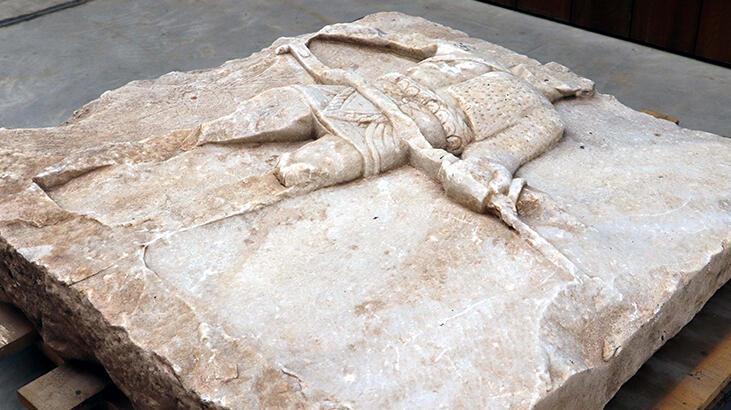
A 2,000-year-old gladiator relief that was seized by the police in the northwestern province of Çanakkale has been examined by Troy Museum officials.
It was determined that the warrior in the relief was a “Retiarius” class gladiator, who wore a light armored suit consisting of an arm and shoulder protection, did not have a helmet on his head, and preferred to fight with a net and spear.
Troy Museum Director Rıdvan Gölcük stated that they thought the gladiator relief belonged to Troy, where three days of fights were organized in antiquity.
The relief, which dates back to the Roman era in the 1st century, was seized in a house in Kumkale village near the ancient city of Troy on Nov. 30. Survived intact until today, the relief is evaluated as an evidence for the gladiator fights in Troy.
Stating that gladiator fights were extremely important for the emperors to strengthen their own images, Gölcük said, “These fights were not limited to Rome only. We know that these fights were held on Anatolian lands, too. We know that amphitheaters for gladiator fights were built in cities such as Kyzikos and Aphrodisias. Gladiator fights were held in the cities of Troy, Assos, Alexandra Troas and Parion in the Troy region. There is a depiction of a gladiator on this relief. His legs and head are broken. But we know that this is a gladiator belonging to the Retiarius class.”
Stating that gladiators fought in various classes, Gölcük said, “The Retiarius class gladiators fought with a triple-spear called ‘fuscina’ or a net. After throwing the net on his enemies, he used the fuscina. There is no net or spear on the gladiator on our relief. Retiarius gladiators had an armor called ‘manica’ that protected their heart and left arm because the used their left arm. This is the only gladiator class among the others to wear the manica on left arm. Other gladiators wore it on their right arm. At the same time, they had a dress at the waist, called ‘subligaculum’ which we can call underwear. The gladiator in this relief is broken. Retiarius class gladiators did not wear helmets. Their heads were bare. There was no extra protection in his legs.”
Explaining that many amphitheaters in Anatolia were not built especially for gladiator fights but they were later made suitable for these fights, Gölcük said, “We believe that this example is related the gladiator fights held in Troy. We hope to find the trace of this in the near future.”